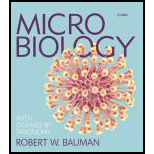
Concept explainers
(1)
To determine:
Blastomyces is dimorphic,what does this adjective means.
Case summary:
Phil was suffering from flu that was characterize by fever and chills, shivering, coughing, muscles aches, tiredness, feeling of yuckiness (no running nose). This flu was caused by Blastomyces which is a dimorphic
He caught this diseases as he inhaled the fungal spores that were released from hyphae of Blastomyces which is growing on wet leaves in the region of Winconsin and Ontario. Theze spores then enter in the Phil’s lungs and gernminated.
2.
To determine:
Why does AIDS increases the incidence of Blastomyces.
Case summary:
Blastomycosis is a type of fungal infection which is caused by fungus Blastomyces dermatitidis. It is a chronic infection which occurs in immunocompromised patients. The fungus exists in two dimorphic form such as yeast and mold form.
3.
To determine:
Blastomyces is a mold that grows on dead leaves, so how it cause disease in people.
Case summary:
Blastomycosis is a dimorphic fungi that exists in two forms “mold and yeast” form. These plants release fungal spores and if these spores are inhaled they infects and germinats in the lungs of the target individual.
Want to see the full answer?
Check out a sample textbook solution
Chapter 22 Solutions
Microbiology with Diseases by Taxonomy (5th Edition)
- please fill in the empty sports, thank you!arrow_forwardIn one paragraph show how atoms and they're structure are related to the structure of dna and proteins. Talk about what atoms are. what they're made of, why chemical bonding is important to DNA?arrow_forwardWhat are the structure and properties of atoms and chemical bonds (especially how they relate to DNA and proteins).arrow_forward
- The Sentinel Cell: Nature’s Answer to Cancer?arrow_forwardMolecular Biology Question You are working to characterize a novel protein in mice. Analysis shows that high levels of the primary transcript that codes for this protein are found in tissue from the brain, muscle, liver, and pancreas. However, an antibody that recognizes the C-terminal portion of the protein indicates that the protein is present in brain, muscle, and liver, but not in the pancreas. What is the most likely explanation for this result?arrow_forwardMolecular Biology Explain/discuss how “slow stop” and “quick/fast stop” mutants wereused to identify different protein involved in DNA replication in E. coli.arrow_forward
- Molecular Biology Question A gene that codes for a protein was removed from a eukaryotic cell and inserted into a prokaryotic cell. Although the gene was successfully transcribed and translated, it produced a different protein than it produced in the eukaryotic cell. What is the most likely explanation?arrow_forwardMolecular Biology LIST three characteristics of origins of replicationarrow_forwardMolecular Biology Question Please help. Thank you For E coli DNA polymerase III, give the structure and function of the b-clamp sub-complex. Describe how the structure of this sub-complex is important for it’s function.arrow_forward
- Lifetime Physical Fitness & WellnessHealth & NutritionISBN:9781337677509Author:HOEGERPublisher:Cengage
 Medical Terminology for Health Professions, Spira...Health & NutritionISBN:9781305634350Author:Ann Ehrlich, Carol L. Schroeder, Laura Ehrlich, Katrina A. SchroederPublisher:Cengage Learning
Medical Terminology for Health Professions, Spira...Health & NutritionISBN:9781305634350Author:Ann Ehrlich, Carol L. Schroeder, Laura Ehrlich, Katrina A. SchroederPublisher:Cengage Learning - Understanding Health Insurance: A Guide to Billin...Health & NutritionISBN:9781337679480Author:GREENPublisher:Cengage





